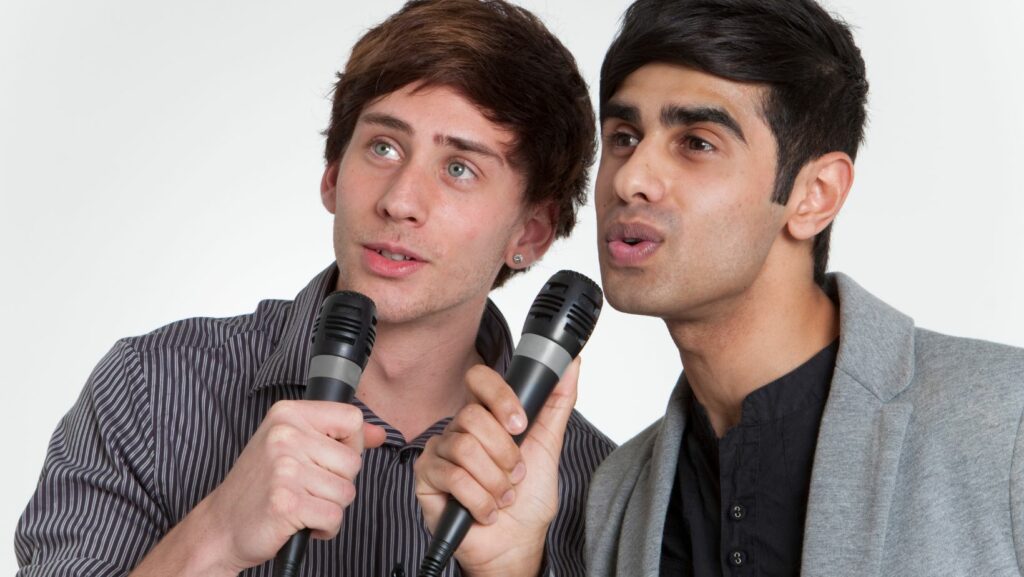These collaborations often stem from mutual respect among artists or spontaneous creative sparks during studio sessions. Regardless of their origins, such pairings frequently lead to captivating tracks that resonate with audiences and achieve chart success.
Unexpected Music Collaborations

Unexpected collaborations are becoming catalysts for innovation in the evolving musical landscape. Artists from diverse genres unite, bridging styles and engaging varied audiences. Digital platforms enable experimentation, allowing musicians to connect globally.
High-profile partnerships exemplify this trend. For instance, rapper Lil Nas X and country star Billy Ray Cyrus’s “Old Town Road” fused genres and captured global attention, while Lady Gaga and Metallica’s Grammy performance united rock and pop fans. These collaborations not only elevate mainstream artists but also empower indie musicians to connect across genres through social media, promoting inclusivity.
The influence of these collaborations extends beyond individual songs; they challenge industry norms, encouraging listeners to explore new musical tastes. As audiences discover diverse sounds, fan bases grow, leading to increased streams and sales. Successful collaborations can set trends, highlighting how genre-blending tracks dominate streaming platforms and inspiring similar efforts among artists.
Memorable Collaborations from the Past

Many unexpected collaborations have left a lasting impact. Paul McCartney and Stevie Wonder’s “Ebony and Ivory” served as an anthem for racial harmony, topping the Billboard charts in 1982. David Bowie and Queen’s “Under Pressure” remains a fan favorite, showcasing the successful fusion of rock and pop.
In 1999, Santana and Rob Thomas’s “Smooth” blended Latin rock with pop, winning three Grammy Awards and demonstrating the power of unexpected partnerships. Aerosmith and Run-D.M.C.’s “Walk This Way” revitalized Aerosmith’s career and brought hip-hop into the mainstream. Johnny Cash and Bob Dylan’s “Girl from the North Country” combined folk and country, proving the timeless appeal of collaborations.
Recent Surprising Collaborations
In recent years, artists have continued to surprise audiences by merging unexpected genres. Ed Sheeran and Travis Scott’s “Antisocial” blended pop and trap, while Miley Cyrus and Dua Lipa’s “Prisoner” infused pop with rock elements. Bad Bunny and J Balvin’s “La Canción” showcased the power of Latin music, reaching global audiences.
Phoebe Bridgers and The 1975’s “Jesus Christ 2005 God Bless America” stood out for its emotional content, while BTS and Halsey’s “Boy With Luv” broke language barriers and achieved massive success. Anderson .Paak and André 3000’s “Come Home” brought together jazz and hip-hop, earning critical acclaim.
Impact on the Music Industry

Unexpected collaborations significantly reshape the music industry landscape. By merging distinct genres, these partnerships create fresh sounds that captivate diverse audiences. Artists gain exposure to broader fan bases, attracting listeners from various backgrounds.
These collaborations inspire creativity, prompting musicians to explore new sounds and challenge industry norms. As artists step outside their comfort zones, they influence trending genres and contribute to musical evolution. Collaborations can lead to new movements, like rap-rock or pop-EDM, shifting the industry’s direction.
Moreover, the marketing of music benefits from these trends. Labels utilize social media to promote collaborative projects, leveraging viral moments for greater visibility. Successful collaborations often dominate charts, encouraging record companies to invest in cross-genre ventures.
Financially, artists benefit from expanded audiences and increased revenue streams. Successful partnerships often boost ticket sales for joint tours, creating mutual growth opportunities.
Challenges and Controversies
Despite the excitement of unexpected collaborations, challenges exist. Critics argue that some partnerships may feel forced or more driven by marketing than genuine artistic connection. Additionally, logistical difficulties can arise when coordinating schedules and creative visions among diverse artists.
However, the potential for groundbreaking music and expanded audience reach often outweighs these negatives. As the music industry evolves, unexpected collaborations will continue to be vital for artistic innovation, pushing boundaries and redefining what’s possible in music creation.

